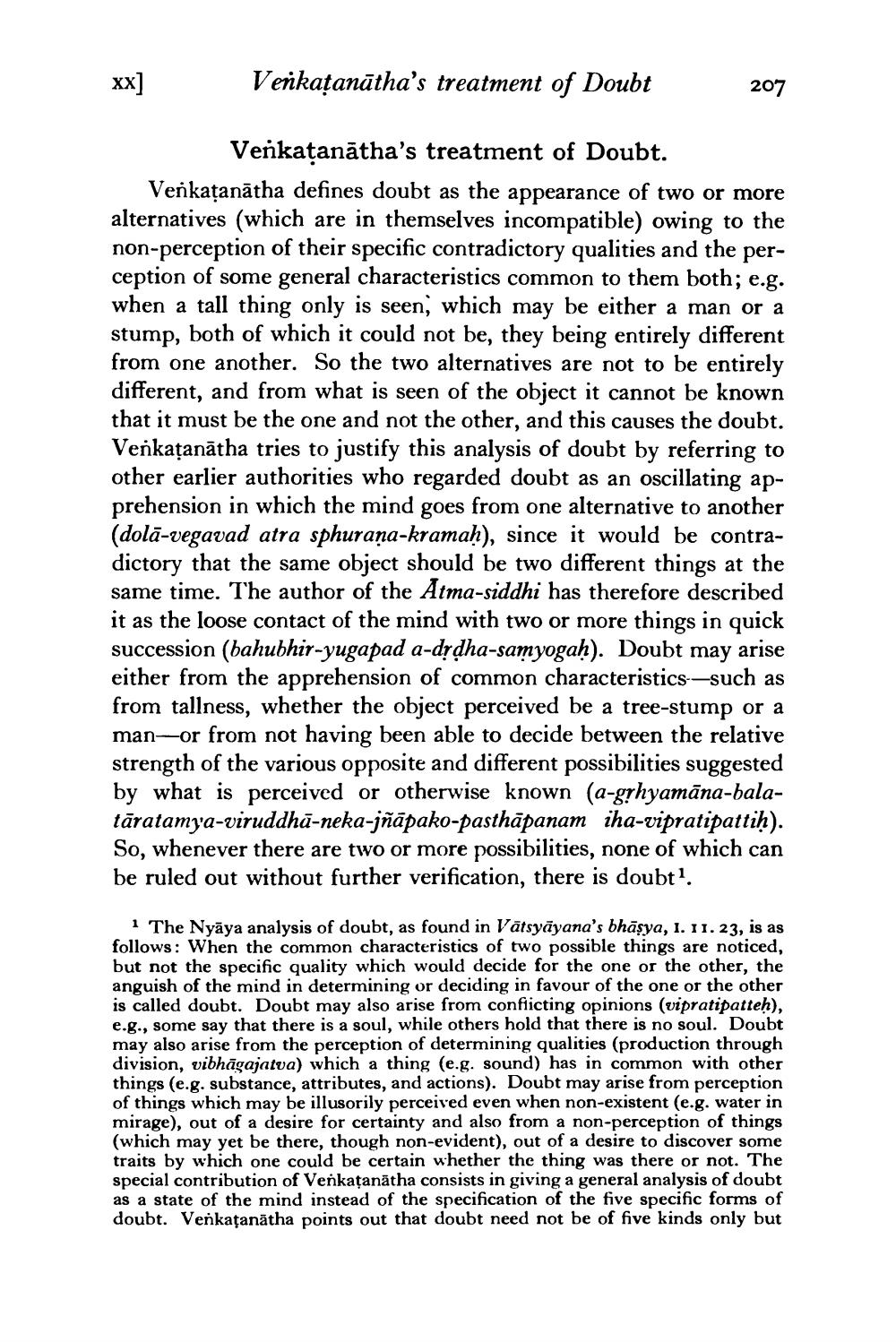________________
xx]
Venkațanātha's treatment of Doubt
207
Venkațanātha's treatment of Doubt. Venkațanātha defines doubt as the appearance of two or more alternatives (which are in themselves incompatible) owing to the non-perception of their specific contradictory qualities and the perception of some general characteristics common to them both; e.g. when a tall thing only is seen, which may be either a man or a stump, both of which it could not be, they being entirely different from one another. So the two alternatives are not to be entirely different, and from what is seen of the object it cannot be known that it must be the one and not the other, and this causes the doubt. Venkațanātha tries to justify this analysis of doubt by referring to other earlier authorities who regarded doubt as an oscillating apprehension in which the mind goes from one alternative to another (dolā-vegavad atra sphuraņa-kramaḥ), since it would be contradictory that the same object should be two different things at the same time. The author of the Atma-siddhi has therefore described it as the loose contact of the mind with two or more things in quick succession (bahubhir-yugapad a-drờha-samyogah). Doubt may arise either from the apprehension of common characteristics—such as from tallness, whether the object perceived be a tree-stump or a man-or from not having been able to decide between the relative strength of the various opposite and different possibilities suggested by what is perceived or otherwise known (a-gļhyamāna-balatāratamya-viruddhā-neka-jñāpako-pasthāpanam iha-vipratipattiḥ). So, whenever there are two or more possibilities, none of which can be ruled out without further verification, there is doubt?.
1 The Nyāya analysis of doubt, as found in Vātsyāyana's bhāsya, 1. 11. 23, is as follows: When the common characteristics of two possible things are noticed, but not the specific quality which would decide for the one or the other, the anguish of the mind in determining or deciding in favour of the one or the other is called doubt. Doubt may also arise from conflicting opinions (vipratipatteh), e.g., some say that there is a soul, while others hold that there is no soul. Doubt may also arise from the perception of determining qualities (production through division, vibhāgajatva) which a thing (e.g. sound) has in common with other things (e.g. substance, attributes, and actions). Doubt may arise from perception of things which may be illusorily perceived even when non-existent (e.g. water in mirage), out of a desire for certainty and also from a non-perception of things (which may yet be there, though non-evident), out of a desire to discover some traits by which one could be certain whether the thing was there or not. The special contribution of Venkatanātha consists in giving a general analysis of doubt as a state of the mind instead of the specification of the five specific forms of doubt. Venkațanātha points out that doubt need not be of five kinds only but




